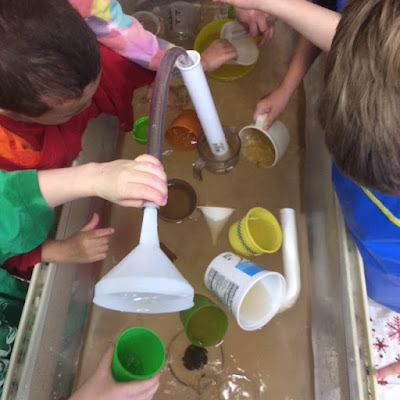After weeks preparing for an arts experience by discussing
Matisse and Picasso, and by drawing or cutting out shapes, it was time for my
small group of eight to put together a “product”. This would be our
contribution to the school’s fund raising auction.
The children and I met around paper on a large table. I asked each child to choose a shape from the bag of shapes they had cut, and to place "their" shape on the paper. Then the negotiations began. My job, as teacher/facilitator, was to have the children think as a group, to let go of their attachment to their own shapes, and make some difficult group decisions about where the shapes should go to make a more pleasing (to the group) picture. I made changes and asked for a vote. I asked individuals to make suggestions for improvements. It was a very enjoyable group effort, one that pleased each child and myself. In the process some of the children caught on that using white space as part of the picture was an artistic choice, and not just for background. There were also lively and constructive discussions!
Arts integration means integrating both the formal ideas and ideals of arts disciplines with the ideas and ideals of language, history, mathematics, engineering, and science. Because the arts are integrative in themselves, they entice and seduce our children into learning. During my own research for this work, I discovered (teacher, teach thyself!) that the word shape can be categorized as either geometric (that which we teach young children to the point of obsession), or biomorphic (shapes children see effortlessly, through their curiosity in exploring their world. These are the shapes of nature, and include the human body). We explored these shapes through the work of Matisse.
All process is a function of play. All humans play with materials, with ideas, with words. Play is the precursor to invention, to innovation. In early childhood, some play-based programs have it half right. Their children learn through play, yes. But adults are often just furniture around which to play, or people who only talk to each other while they “watch” children. Adults should play a role, in school, to safeguard and encourage process, and they are instrumental in reminding children of their most deeply held interests when distractions prevail. If a child invents something, ruminates over it, takes time and energy all alone, that is a play/process/learning experience. When a group decides to make a trampoline out of old rubber mats and tires, it is a model of group invention and innovation. This is process, but the children rejoice in the product as well.
Using documentation (pictures, anecdotes, videos, of the children's process) makes their learning visible, as they say in Reggio. It allows children to see where they have been. There is nothing more interesting and, dare I say, entertaining than to listen in on children's conversations as they view their own art or photographs! Teachers of young children need the insight they receive from children's own mouths to proceed in their work.
Now perhaps my children would have made a totally different range of pictures, inspired by the book, Henri's Scissors, which we read, had I just let them go at it. And I believe that some wonderful works of art would have been the result. In this case, this teacher didn't want to leave this to chance, considering her deadline. All in all, it worked out, and we have all of that colored paper for more art for the children.






















